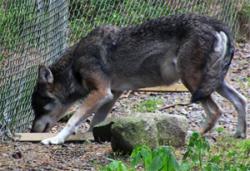Introduction

Despite the fact that much research has been done, investigating the relation between predator and prey and the behavioral responses that are evoked by blood odors, little is known about the underlying volatiles that comprise the odor of mammalian blood. Similarly, not much is known whether single volatiles are sufficient to evoke a behavioral response in the prey and predator species or whether the complex odor mixture of blood is necessary to evoke such a response.
However, recent studies have identified a volatile substance in mammalian blood called trans-4,5-epoxy-(E)-2-decenal that humans describe as a “metallic, blood-like” odor (Buettner & Schieberle 2001, Rachamadugu 2012). In humans, the olfactory detection threshold for trans-4,5-epoxy-(E)-2-decenal is extremely low, 0.33 ppt (Czerny et al. 2008). Another volatile substance called 2-pentylfuran has been identified as a component of meat odor in different species such as duck (Anas platyrhynchos), pork (Soncin et al. 2007), sheep (Ovis aries) and cattle (Bos taurus) (Wu & Liou 1992, Boylston et al. 1996). Humans have also been found to have a low olfactory detection threshold of 0.027 ppb for this substance (Van Gemert 2011).
Aim

The aim of this project was
- To assess behavioral responses of meerkats (Suricata suricatta) to the odor of horse blood and a blood odor component (trans-4,5-epoxy-(E)-2-decenal).
- To assess behavioral responses of Eurasian wolves (Canis lupus) to the odor of pig blood and a meat odor component (2-pentylfuran).
- To compare their behavioral responses to those towards a plant-derived control odor and an odorless control.
- To compare the behavioral responses between the wolves and two other carnivore species tested previously with the same odor stimuli, and between the meerkats and the five other carnivore species tested previously with the same odor stimuli.
Responsible for this page:
Director of undergraduate studies Biology
Last updated:
04/28/17
